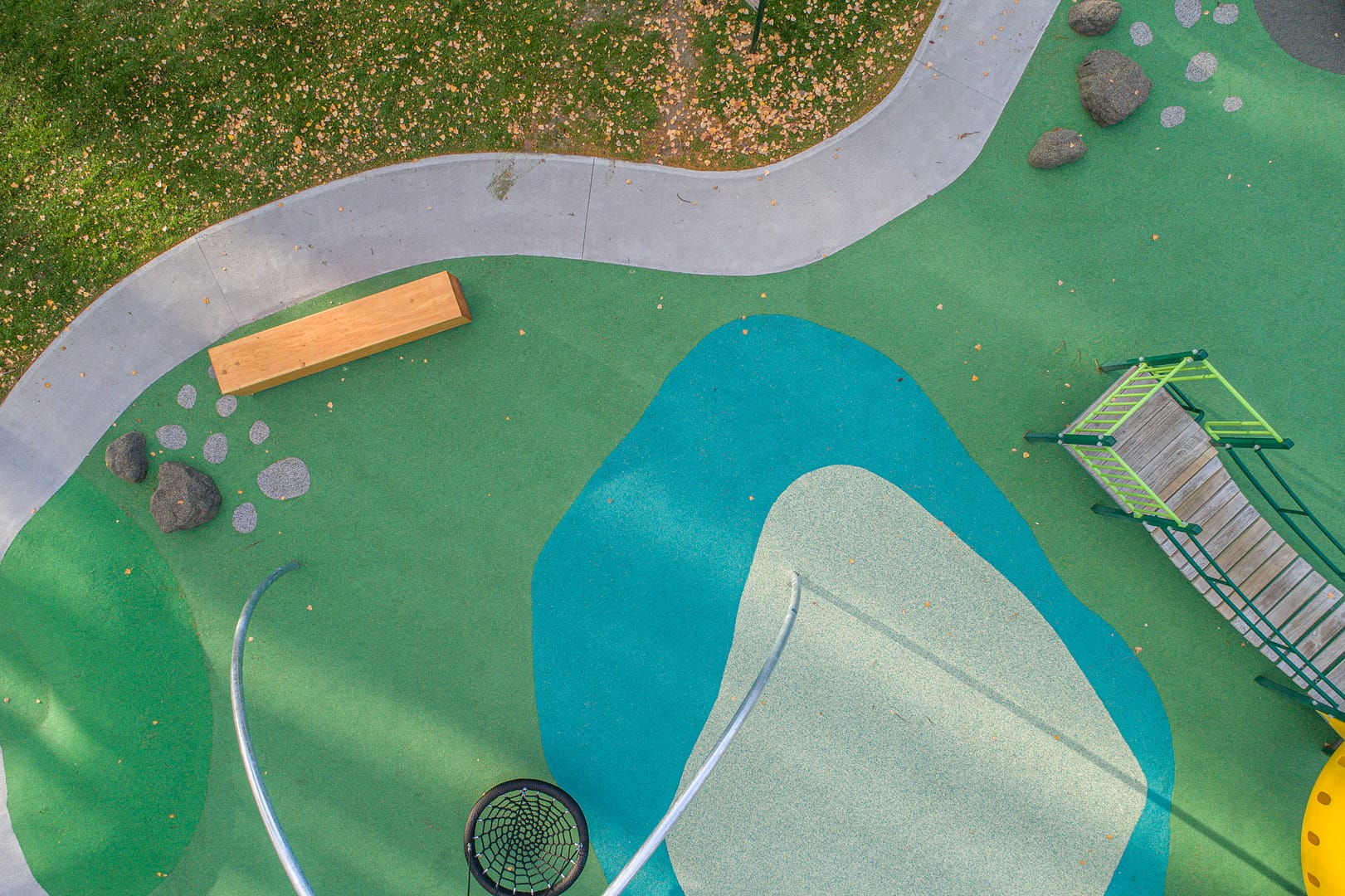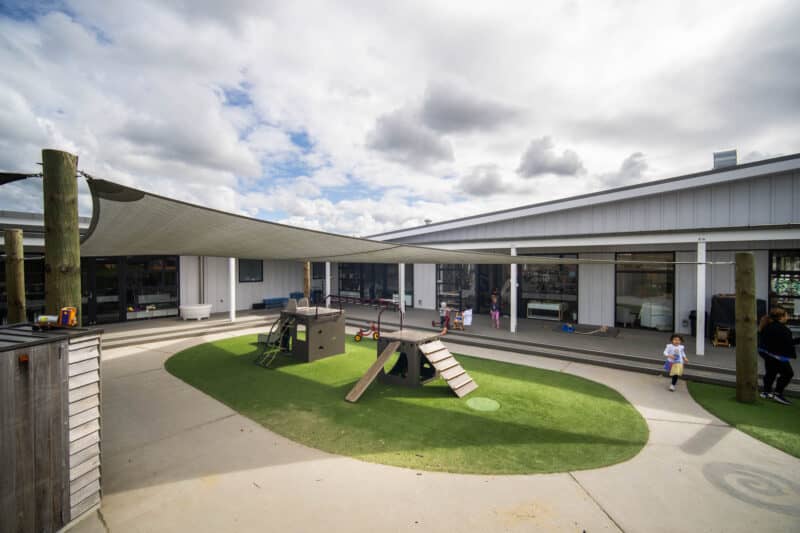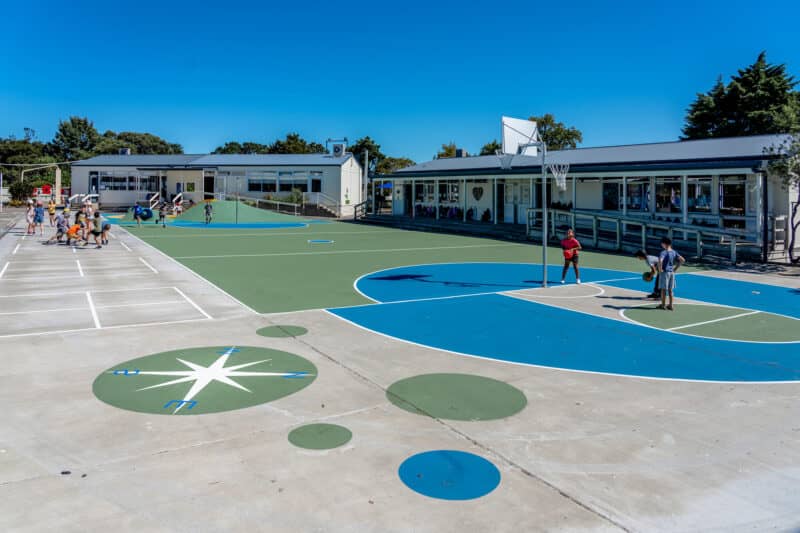When you’re planning a playground, one of the biggest decisions you’ll face is choosing the right surface. Concrete and wet-pour rubber are two types of surfacing used in most playgrounds.
Both surfacing types have strengths and different uses, but which is right for you? Let’s help you navigate this choice.
Concrete Surfacing
You might consider concrete because it’s been a staple in play spaces for ages. It can be used on basketball courts and mainly pathways. Here’s what you can expect:
- Durability and Longevity: It stands the test of time; it might crack, but maintenance is not too costly.
- Low Maintenance: Once laid, you can mostly forget about it. Washing it from time to time can help you keep its original colour.
- Cost-Effective: You might find it’s lighter on your wallet over the years. However, it’s essential to be aware of price changes globally. You can currently expect to pay $150-300 per m2.
- Design Freedom: You can paint, texture, and make it uniquely yours. It adds play value and different types of play for playground users.
The Limitations of Concrete
While concrete is fantastic for pathways and specific areas, it might not be the best for every corner of your playground. Its hard nature can be tough on kids, especially if they fall. Another limitation of concrete is the noise. In closed spaces, the noise will travel and reverberate, not absorbing the noise.
And when wet, it can be a slip hazard. If you’re leaning towards concrete pathways, ensure a safety border for added protection.
Wet Pour Rubber Surfacing
If you’re looking for something modern, wet pour rubber might be your answer. Here’s why:
- Safety First: It’s designed to cushion those inevitable falls. It comes with two layers of protection. An underlayer called shock pad, where recycled rubber is installed, and on top, you can have vibrant colours in your space. In sensory areas, wet pour rubber is great for noise absorption, improving the quality of the space.
- Design Flexibility: You can play with colours and patterns to match your vision. You can add games with rubber surfacing and animal shapes or tell a story to engage its users with other playground features.
- Resistant: It’s built to withstand the elements and last long. TPV rubber is of high quality and lasts more than ten years. At the end of its use, it can be recycled into new playground surfaces.
- Cost: For pour and play you can expect different prices depending on the complexity of the work. What we mean by that is how many colours will be mixed, the complexity of patterns and if shockpad is required for fall protection. Taking that all into account, you can expect prices from $250 to $500 per m2, all dependant on the complexity of your space.
Its versatility means you can maximize your play area without compromising on safety.
Dissavantages of Wet Pour Rubber
While it’s a fantastic option, you should know it comes with a higher upfront cost. And if you don’t opt for TPV, the vibrant colours might fade over time.
But with TPV, you can ensure your playground remains colourful for years with its UV protection and high-quality manufacturing.

Which One's for You?
Choosing the best surface for your playground combines practicality and vision. They can both be used in the same space and have different applications.
Concrete, with its durability and design versatility, has been a trusted choice for many, especially in urban spaces and pathways.
Wet-pour rubber safety features, design flexibility, and environmental friendliness make it a favourite.
Whether it’s the classic appeal of concrete or the innovative charm of wet-pour rubber, your choice should prioritize the safety and joy of every child.
Read our portfolio below if you want to get ideas for your next surfacing project. Or if you are ready to take the next step, call us on 0800 000 334 or book a site visit.



















































